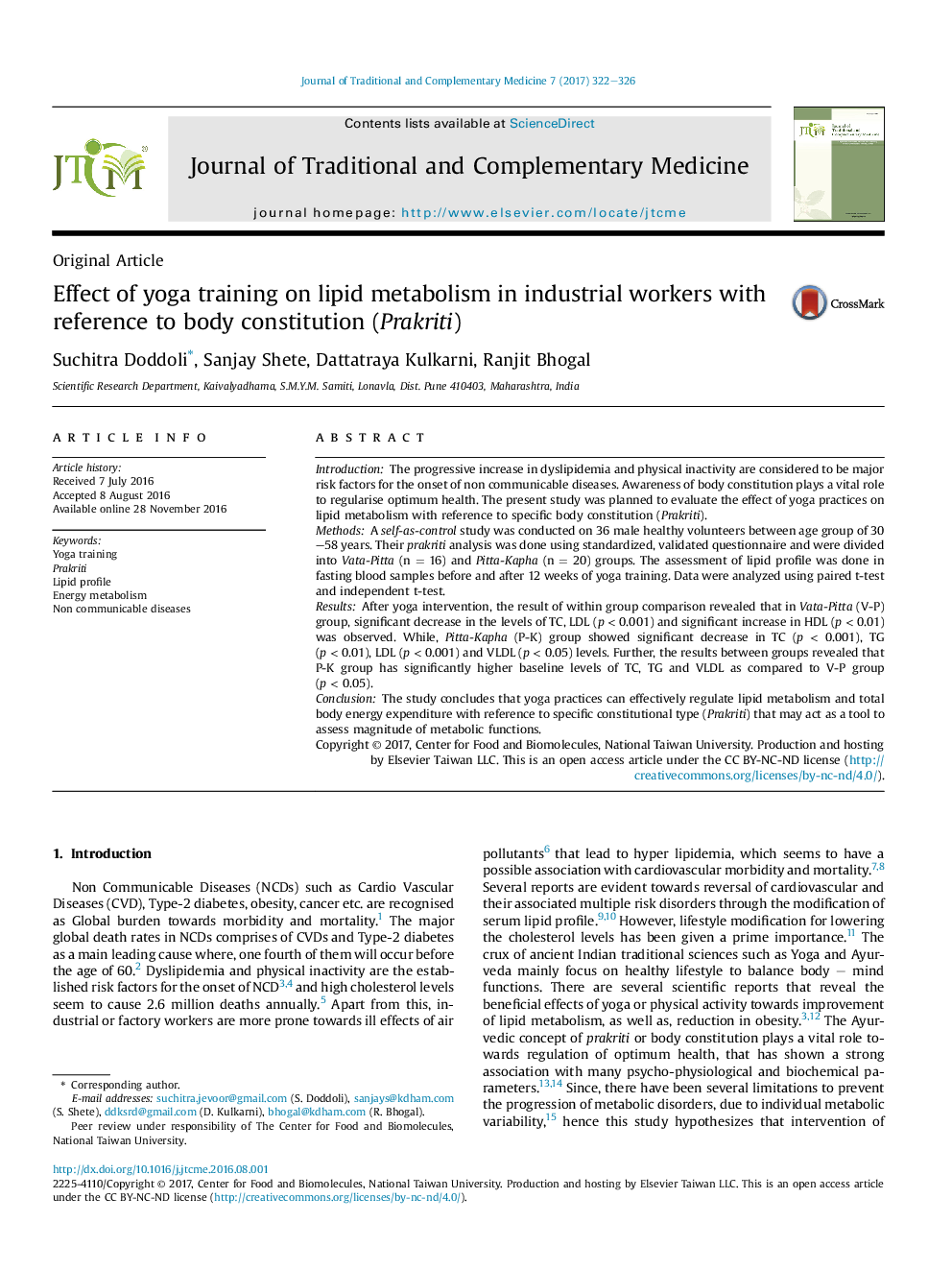| Article ID | Journal | Published Year | Pages | File Type |
|---|---|---|---|---|
| 5635386 | Journal of Traditional and Complementary Medicine | 2017 | 5 Pages |
IntroductionThe progressive increase in dyslipidemia and physical inactivity are considered to be major risk factors for the onset of non communicable diseases. Awareness of body constitution plays a vital role to regularise optimum health. The present study was planned to evaluate the effect of yoga practices on lipid metabolism with reference to specific body constitution (Prakriti).MethodsA self-as-control study was conducted on 36 male healthy volunteers between age group of 30-58 years. Their prakriti analysis was done using standardized, validated questionnaire and were divided into Vata-Pitta (n = 16) and Pitta-Kapha (n = 20) groups. The assessment of lipid profile was done in fasting blood samples before and after 12 weeks of yoga training. Data were analyzed using paired t-test and independent t-test.ResultsAfter yoga intervention, the result of within group comparison revealed that in Vata-Pitta (V-P) group, significant decrease in the levels of TC, LDL (p < 0.001) and significant increase in HDL (p < 0.01) was observed. While, Pitta-Kapha (P-K) group showed significant decrease in TC (p < 0.001), TG (p < 0.01), LDL (p < 0.001) and VLDL (p < 0.05) levels. Further, the results between groups revealed that P-K group has significantly higher baseline levels of TC, TG and VLDL as compared to V-P group (p < 0.05).ConclusionThe study concludes that yoga practices can effectively regulate lipid metabolism and total body energy expenditure with reference to specific constitutional type (Prakriti) that may act as a tool to assess magnitude of metabolic functions.
Graphical abstractDownload high-res image (90KB)Download full-size image
